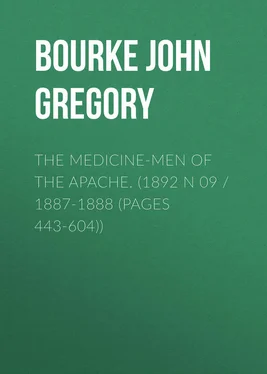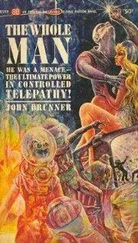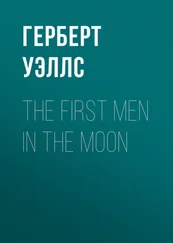Corbusier, in American Antiquarian, Sept., 1886, p. 279.
Source of the Nile, p. 567.
Vol. 2, p. 193.
Ensayo Cronologico, p. 139.
For the Shamans of Kodiak, see Lisiansky, Voyage, London, 1814, p. 208; for the Mexicans, Padre José Acosta, Paris, 1600, cap. 26, p. 256; Society Islands, Malte-Brun, Univ. Geography, vol. 3, lib. 58, p. 634, Boston, 1825. Sir Samuel Baker, The Albert N'yanza, vol. 1, p. 211.
Ternaux-Compans, vol. 9, p. 294.
Catlin, North American Indians, London. 1845, vol. 1, p. 55.
Ibid., p. 95.
Parkman, Jesuits in North America, p. lxxxiv.
Wanderings of an Artist in North America, p. 40.
Dec. 2, lib. 6, p. 161.
Purchas, lib. 9, cap. 12, sec. 4, p. 1555, edition of 1622.
Chinigchinich, p. 253.
Theal, Kaffir Folk-lore, pp. 209-210.
Clements R. Markham, Note on Garcilasso de la Vega, in Hakluyt Soc., vol. 41, p. 183, quoting Acosta, lib. 5, cap. 4.
Andrew Lang, Custom and Myth, New York, 1885, chapter entitled "The bull roarer," pp. 29-44.
John Fraser, The Aborigines of Australia; their Ethnic Position and Relations, pp. 161-162.
"When the rain-maker of the Lenni Lennape would exert his power, he retired to some secluded spot and drew upon the earth the figure of a cross (its arms toward the cardinal points?), placed upon it a piece of tobacco, a gourd, a bit of some red stuff, and commenced to cry aloud to the spirits of the rains." – Brinton, Myths of the New World, New York, 1868, p. 96 (after Loskiel).
Père Chrestien Le Clercq, Gaspesie, Paris, 1691, p. 170.
Ibid., cap. x, pp. 172-199.
Dec. 2, lib. 2, p. 48.
Ibid., p. 59.
Assinniboine and Saskatchewan Expedition, vol. 2, p. 123.
New York, 1819, pp. x, xxix, 47.
Forster, Voyage Round the World, vol. 1, pp. 219, 519.
Hawkesworth, op. cit., vol. 2, p. 161.
Ibid., p. 257.
Ibid., vol. 1, p. 113.
Forlong, Rivers of Life, vol. 1, pp. 541, 542.
Nat. Races, vol. 1, p. 380.
Kohl, Kitchi-gami, pp. 345, 346.
Tanner's Narrative, p. 372.
John de Laet, lib. 3, cap. 18, p. 90, quoting Capt. John Smith.
Le Jeune in Jesuit Relations, 1633, vol. 1, Quebec, 1858.
Third Voyage of David Peter De Vries to New Amsterdam, in Trans. N. Y. Hist. Soc., vol. 3, p. 91.
Charlevoix, New France, New York, 1866, vol. 4, p. 105.
Squier, Serpent Symbol, p. 197.
Coleman, Mythology of the Hindus, London, 1832, p. 63.
Vol. 3.
Speke, Source of the Nile, London, 1863, p. 500.
Ibid.
Stanley, Through the Dark Continent, vol. 1, p. 327.
Miles, Demigods and Dæmonia, in Jour. Ethnol. Soc., London, vol. 3, p. 28, 1854.
Smyth, Aborigines of Victoria, vol. 1, p. 30.
Ibid., p. 131.
Ibid., p. 348.
Peter Kolben, speaking of the Hottentots, in Knox, vol. 2, p. 394.
O-kee-pa, pp. 28-29.
Frazer, Totemism, Edinburgh, 1887, pp. 54, 55; after Maximilian.
Kelly, Narrative of Captivity, Cincinnati, 1871, p. 143.
Différens Cultes, vol. 1, p. 57.
Judges, I, 7.
Brand, Pop. Ant., London, 1882, vol. 3, p. 278.
American Anthropologist, Washington, D. C., January, 1888.
Kingsborough, vol. 8, p. 70. The Aztec believed that the woman who died in childbirth was equal to the warrior who died in battle and she went to the same heaven. The middle finger of the left hand is the finger used in the necklace of human fingers.
Sahagun, in Kingsborough, vol. 7, p. 147.
Pliny, Nat. Hist., lib. 28, cap. 20. Holland's translation.
Shakespeare, Macbeth, act 4, scene 1.
Pliny, Nat. Hist., lib. 28, cap. 11.
Tractatus de Fascinatione, Nuremberg, 1675, p. 681.
Teutonic Mythology, vol. 3, p. 1073.
Brand, Pop. Ant., vol. 3, p. 10.
Montfaucon, l'Antiquité expliquée, vol. 2, liv. 4, cap. 6, p. 249.
Vâsish th a, cap. 3, pars. 64-68, p. 25 (Sacred Books of the East, Oxford, 1882, Max Müller's edition).
Travels of Two Mohammedans through India and China, in Pinkerton's Voyages, vol. 7, p. 218.
Every-Day Book, vol. 2, col. 95.
"Traen los dientes al cuello (como sacamuelas) por bravosidad." – Gomara, Historia de las Indias, p. 201.
"Los Caberres y muchos Caribes, usan por gala muchas sartas de dientes y muelas de gente para dar á entender que son muy valientes por los despojos que alli ostentan ser de sus enemigos que mataron." – Gumilla, Orinoco, Madrid, 1741, p. 65.
Padre Fray Alonzo Fernandez, Historia Eclesiastica, Toledo, 1611, p. 17.
Ibid., p. 161.
Cérémonies et Coûtumes, Amsterdam, 1735, vol. 6, p. 114.
"Formada la cara como de Sol, con rayos de Nacar al rededor, y perfilada de lo mismo; y en la boca embutidos los dientes, que quitaron à los Españoles, que avian muerto." – Villaguitierre, Hist. de la Conquista de la Provincia de el Itza, Madrid, 1701, p. 500. (Itza seems to have been the country of the Lacandones.)
Edwards, speaking of the Carib, quoted by Spencer, Desc. Sociology. The same custom is ascribed to the Tupinambi of Brazil. Ibid, quoting from Southey.
Through the Dark Continent, vol. 2, p. 286.
Ibid., p. 288.
Ibid., p. 290.
Speke, Source of the Nile, London, 1863, p. 500.
Читать дальше












